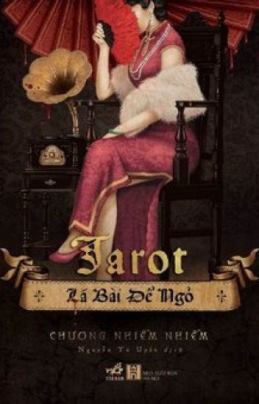Tarot Outside the Box – Valerie Sim
Surveys of Tarot readers done on different e-lists show that the majority use one to three Tarot decks predominantly and only a couple of spreads for most of their Tarot work. They will buy other decks and use alternate spreads on occasion, but return to their “comfort deck” (one of Valerie’s terms) or spread with surprising regularity, leaving the rest on the shelf gathering dust. Sure, they get to know the many nuances of their favorites, resulting in a depth of meaning and a perception of complex patterns that add richness and insight to their interpretations, but they can get stuck with seeing things from only one perspective. You won’t find Valerie Sim’s decks getting dusty!
This book presents a multitude of surprising and exciting ways to break out of the box, which can become too narrow, constricting, and dogmatic. It shows you how to escape the supposed rules and stimulate creative thinking and learning.
Not so long ago, in the early days of e-lists, I suggested mixing several decks together in a big “pool” and then drawing cards from this pool for a reading. This was met by quite a few outspoken individuals with shock, horror, and derision, as if it were an outrageous sacrilege equaled only by my admission that I also cut the borders off some decks. They felt that I was treating the cards with gross disrespect. To me, it was not that at all, but rather a desire to spur inspiration and an effort to explore Tarot’s untested potentials. This is Valerie Sim’s viewpoint, and this book shows the lengths to which she will go to probe the vast terrain that modern Tarot has to offer those who are willing to go beyond the box.
For Valerie Sim the innovative potential that comes with mixing and matching all the elements of Tarot can go much further than even I had imagined. The e-list she created, Comparative Tarot, is not only one of the largest and most friendly of Tarot communities, it is also one of the most wide-ranging, offering opportunities to be involved in the actual making of new decks and fiction stories, or in discussions of unusual decks, or exercises that will help you hone your reading skills, and much, much more. She encourages the idea that there is not one “true” Tarot and that a person can experience myriad delights and gain wisdom through comparing the characteristics found in a variety of decks and perspectives.
First you’ll learn her comparative methods, then combination readings and interactive techniques. You’ll go on to formulating questions, exploring new spreads (several created by members of Comparative Tarot), using elemental dignities, plus writing stories and poems. Throughout the book you’ll find plenty of examples that not only show you what the techniques look like in practice, but also introduce you to intriguing new decks.
Sim’s methods offer wonderful ways to introduce yourself to any Tarot deck and for it to quickly become a familiar addition to your Tarot repertoire. In that spirit, I’d like to offer the following suggestion for getting to know a new deck straight “out of the box.”
You’ll need a large space on a table or the floor. Take the cards from their box and lay them out in the following rows: Major Arcana I to X, and directly above these the cards XI to XIX, and above these the XX, XXI, and 0. Under the Magician place all the Aces of the suits as the beginning of four rows (use their suit order or your own). Follow with the Twos under the High Priestess, and so on. Place the Court Cards at the end of the suit rows. Now, examine the patterns. Is each suit differentiated from the others? How? Is a story line or other development apparent as the suit progresses? Do all the cards of the same number show some kind of resonance or similarity-for instance, among the Empress (3), Hanged Man (12 = 3), World (21 = 3), and the Threes in the four suits? Can you discern any pattern of relationship or repetition of shapes, colors, objects, or themes among the cards? Which cards do you like most and which do you like least? If you want, lay out the cards from your favorite deck next to these cards and compare and contrast. How are the cards similar and how are they different?
Gather up the cards from your new deck and shuffle them, asking something like, “What does this deck have to offer me?” or “What is this deck best used for?” Pull one card. Describe it. Read what the accompanying book says about it. Summarize what you feel is its response. Take the same card from a couple of other decks and see what additional insights they offer. You may want to complete this process with a welcoming and dedication ritual for your new deck that acknowledges the message you received from the card.
Now it’s time for you to break out of the confines of everything you thought you knew about the Tarot. Enjoy your journey.
Mary K. Greer


 Đang tải dữ liệu
Đang tải dữ liệu









Chia sẻ ý kiến của bạn